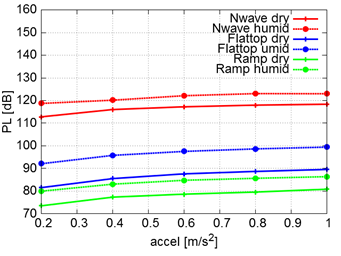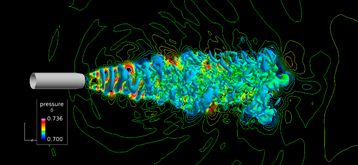Study on Acoustic Analysis Techniques to Improve Aerospace Interior Acoustic Environment
JAXA Supercomputer System Annual Report April 2016-March 2017
Report Number: R16E0014
- Responsible Representative: Yuichi Matsuo(Aeronautical Technology Directorate, Numerical Simulation Research Unit)
- Contact Information: Takashi Takahashi(takahashi.takashi@jaxa.jp)
- Members: Kan Ohkubo, Takahiro Higashi, Takumi Iwao, Yuya Ohmichi, Takashi Takahashi, Masashi Kanamori, Mami Hayakawa, Yuta Mori, Tatsuya Narumi, Ryutaro Furuya
- Subject Category: Basic Research(Numerical analysis,Modeling)
Abstract
We are concentrating on the wave-based method, which makes it possible to precisely analyze a wide range of acoustic vibrations up to mid-frequencies. We are also studying the numerical prediction approaches of sound sources and propagations for practical aerospace applications.
Goal
Objective
References and Links
Use of the Supercomputer
Numerical simulations of a focus boom generated by supersonic aircrafts and an unsteady flow of asubsonic jet.
Necessity of the Supercomputer
In order to analyze the characteristics of the focus boom generated by a supersonic aircraft, an analysis tool called FFnoise is used. Analysis of the focus boom with FFnoise uses a large amount of memory, so this computation requires a computer with a large memory.
In order to analyze the jet noise, a large number of computational grids is necessary to capture high frequency sounds. Therefore, a large scale parallel computation is necessary for this analysis.
Achievements of the Year
To clarify the influence of the input waveform and the flight conditions on the focus boom, we conducted the numerical simulation of the focus booms using the FFnoise developed by JAXA. As a calculation target, a small supersonic business jet assumed by JAXA was used. From the analysis results shown in Fig. 1, flattop and ramp, which are low boom waveforms, also have good results in noise reduction of the focus boom. We also confirmed the noise reduction of the focus boom caused by changing the flight path.
We conducted unsteady fluid simulations of a subsonic jet (Fig.2) using FaSTAR developed by JAXA. Thanks to the parallel computation using JSS2, the numerical simulations were completed within a relatively short time. The obtained results showed good agreement with the experimental results.
Publications
Peer-reviewed articles
1) M. Kanamori, T. Takahashi and Y. Makino, ‘Effect of Low-Boom Waveform on Transition Focus Boom Using Lossy Nonlinear Tricomi Equation Analysis’, AIAA J., 2017, (in press)
Computational Information
- Parallelization Methods: Process Parallelization
- Process Parallelization Methods: MPI
- Thread Parallelization Methods: n/a
- Number of Processes: 1024
- Number of Threads per Process: 1
- Number of Nodes Used: 32
- Elapsed Time per Case (Hours): 300
- Number of Cases: 12
Resources Used
Total Amount of Virtual Cost(Yen): 32,187,976
Breakdown List by Resources
| System Name | Amount of Core Time(core x hours) | Virtual Cost(Yen) |
|---|---|---|
| SORA-MA | 18,234,471.11 | 29,840,812 |
| SORA-PP | 30,043.65 | 256,512 |
| SORA-LM | 61,669.79 | 1,387,570 |
| SORA-TPP | 0.00 | 0 |
| File System Name | Storage assigned(GiB) | Virtual Cost(Yen) |
|---|---|---|
| /home | 1,302.58 | 12,287 |
| /data | 51,562.01 | 486,386 |
| /ltmp | 18,717.46 | 176,562 |
| Archiving System Name | Storage used(TiB) | Virtual Cost(Yen) |
|---|---|---|
| J-SPACE | 9.02 | 27,845 |
Note: Virtual Cost=amount of cost, using the unit price list of JAXA Facility Utilization program(2016)
JAXA Supercomputer System Annual Report April 2016-March 2017




